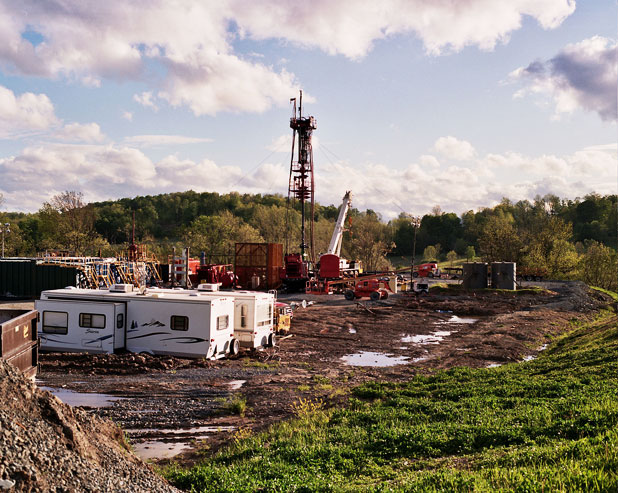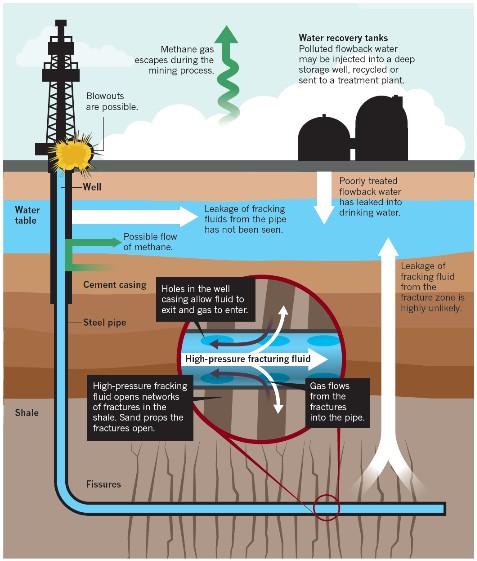
Technological advancement and the shale gas revolution currently underway in the United States has encouraged other countries to seek to extract natural gas trapped in shale rocks or coal seams via the process of hydraulic fracking. This process essentially involves drilling and inserting a pipe deep into the ground and then pumping millions of litres of high pressure water and ‘fracking fluid’ into the shale rock or coal seam, causing it to fracture and releasing stored natural gas where it is then captured for energy production (see below image).

While natural gas is a relatively clean burning fuel, the process of fracking is highly controversial as it risks contaminating nearby water tables with both methane and fracking fluid, which is known to contain a number of carcinogens.
Over the weekend, I watched the US documentary Gasland, which is currently available for viewing via SBS on Demand (click to watch). The film documents in great detail communities in the US adversely impacted by natural gas drilling and, specifically, hydraulic fracking. The film is highly disturbing as it shows the destruction of dozens of US farming communities via poisoning of drinking water and the natural environment, often leading to severe health problems for its citizens.
While I highly recommend that you watch the documentary in full, below is a two-part extract from YouTube, which summarises the key bits:
So what has this got to do with Australia? Well, a number of companies are seeking to undertake fracking of coal seam gas reserves throughout Australia in a bid to harvest natural gas, much of which is destined for export.
However, today the New South Wales Government revealed that it would implement safeguards banning the extraction of coal seam gas near suburbs, country towns and some rural industries, such as horse breeders and wine producers, potentially ruling-out hundreds of proposed gas wells and some $4 billion worth of gas. For example, AGL, which had plans to drill in 66 gas wells near and under housing estates in Western Sydney, looks to be a big loser from the new safeguards.
Given the big question marks over the safety of fracking in the US, as well as the risks posed to ground water stored in Australia’s Artesian Basin and the agricultural industry more generally (see below video), the New South Wales Government is right to proceed with caution.

